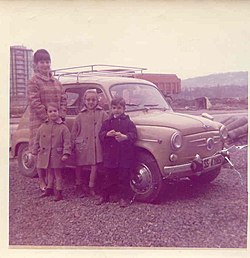Autobesity, also known as car bloat, truck bloat and carspreading, [4] is the trend, beginning in about the 1990s, [5] of cars increasing in average size and weight. [6] [7] The average weight of cars sold in Europe increased by 21% between 2001 and 2022. [8] In the United States, SUVs and pickup trucks comprised more than 75% of new sales in 2024 compared to 38% in 2009. [9]



